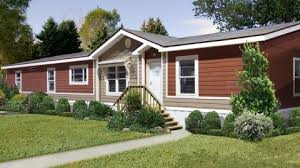9 Steps to Winterize Your Mobile Home
As temperatures begin to cool across the country, it’s time to start thinking about how to winterize your mobile home to protect it against the cold and, in some cases, snow. Even in warmer climates such as the southern United States, winterizing your mobile home to avoid damage to your utilities and fixtures is a surefire way to save money over the course of your mobile home’s life.
Whether you’re preparing for slightly cooler temperatures or for blizzards in the coming months, make sure you take the following steps, if needed, to winterize your mobile home:
Insulate Windows and Doors
If your doors and windows have exposed or damaged insulation, it can lead to drafts inside your home, which means a costlier heating bill. Insulating your windows and doors from the inside ensures that heat doesn’t escape from your mobile home.
There are multiple ways to insulate both your doors and your windows. Many hardware stores offer spray foam insulation useful for filling gaps and cracks in your door frame or window frame, and some may offer large sheets of plastic adhesive that fit over windows to keep the heat indoors. No matter which method you choose to insulate your windows and doors, it’s best to start during the late-autumn, early-winter timeframe to prevent as much heat as possible from escaping your home.
Check Your Pipes
If you suspect that any pipes in your home may have leaks or are otherwise damaged, now is the time to repair them. Not only that, but freezing pipes can result in some of the most extensive damage possible during the winter. Heat tape can help ensure that your pipes are properly warmed and functioning throughout the winter.
Have Your Furnace Inspected
Any utility that provides climate-control for your mobile home, whether it’s a furnace, air conditioning unit, or space heater, should be inspected annually to ensure it works properly. Before winter fully sets in, your furnace will be the most important of these three to inspect.
As mechanics and service professionals become more and more backlogged with service calls towards the end of the year, it’s important to get ahead of the game and have any necessary repairs made to your mobile home’s furnace before you’re stuck waiting in the cold.
Maintain Your Skirting
Moving over to the exterior of your home, you want to ensure that the entirety of your mobile home’s skirting is still in good condition. If there are any cracks or dents, it may lead to damage from external moisture, particularly during snowstorms. Additionally, damaged or missing skirting can lead to frozen pipes, as the skirting keeps cold air from getting under your home.
Check the Marriage Line
In multi-section mobile homes, the marriage line – the seal that keeps each section of the home together – should always be level and firmly sealed. However, if there’s damage to the marriage line, or if it’s become unlevel over time, you risk losing heat around this division, among other problems. As you’re winterizing your mobile home, it might not be a bad idea to check on your marriage line, if you have one, and insulate if needed.
Loosen Your Tie-Downs
On the subject of your mobile home’s bones, each year you’ll also want to loosen your tie-downs ever so slightly, to account for the ground heaving and shifting throughout the winter. This is especially true for mobile homes in colder climates like the northern United States. Having tie-downs that are too tight during harshly cold weather can lead to foundation damage to your mobile home, shortening its lifespan.
Make Sure Your Gutters are Maintained
If you’re in an area such as Florida or Louisiana with high precipitation, or live in snowy Michigan, you’ll want to ensure that your gutters, if you have them, are clear of any debris and are properly installed. If you don’t, freeze-over may occur – which means water or snow may collect in your gutters and create large icicles. This can cause significant gutter damage, so it’s important to check your gutters before the winter sets in to ensure they’re in good condition.
Check For Any Needed Roof Repairs
In addition to checking on your gutters, take time to assess the overall condition of your mobile home’s roof before winter sets in. If you have any leaks, or openings where heat may escape your home, be sure to patch those up before it gets too cold. Repairing your roof can take on many different forms depending on what material your roof is made out of, but our mobile home roofing guide has further insights on how to repair the most common mobile home roofs.
Reverse the Ceiling Fans
The last tip on this list is one many homeowners take advantage of. If you look at your ceiling fan, you’ll see a small switch that changes which direction the fan rotates. During the summer, your fan blades should rotate counterclockwise, whereas in the winter they should rotate clockwise to properly distribute warm air throughout a room.
A mobile home will be one of the greatest investments you make in your life. This is because, for being a widely-used source of affordable housing for millions of Americans, they offer immense value and quality of life. That’s why it’s so important to take extra precautions before each winter season, whether you live in Michigan, Arizona, or Florida, to ensure you get as much value out of your home as possible.









